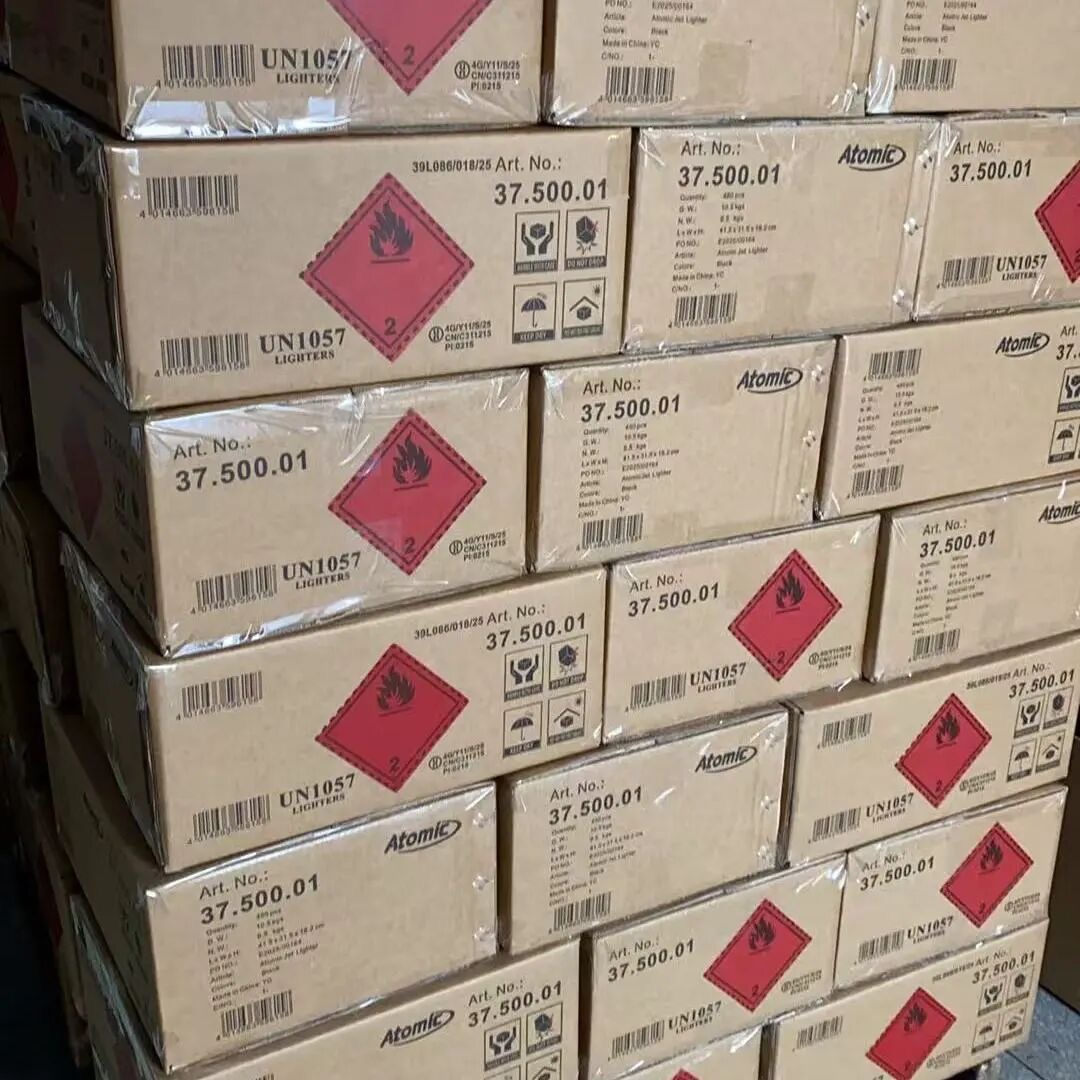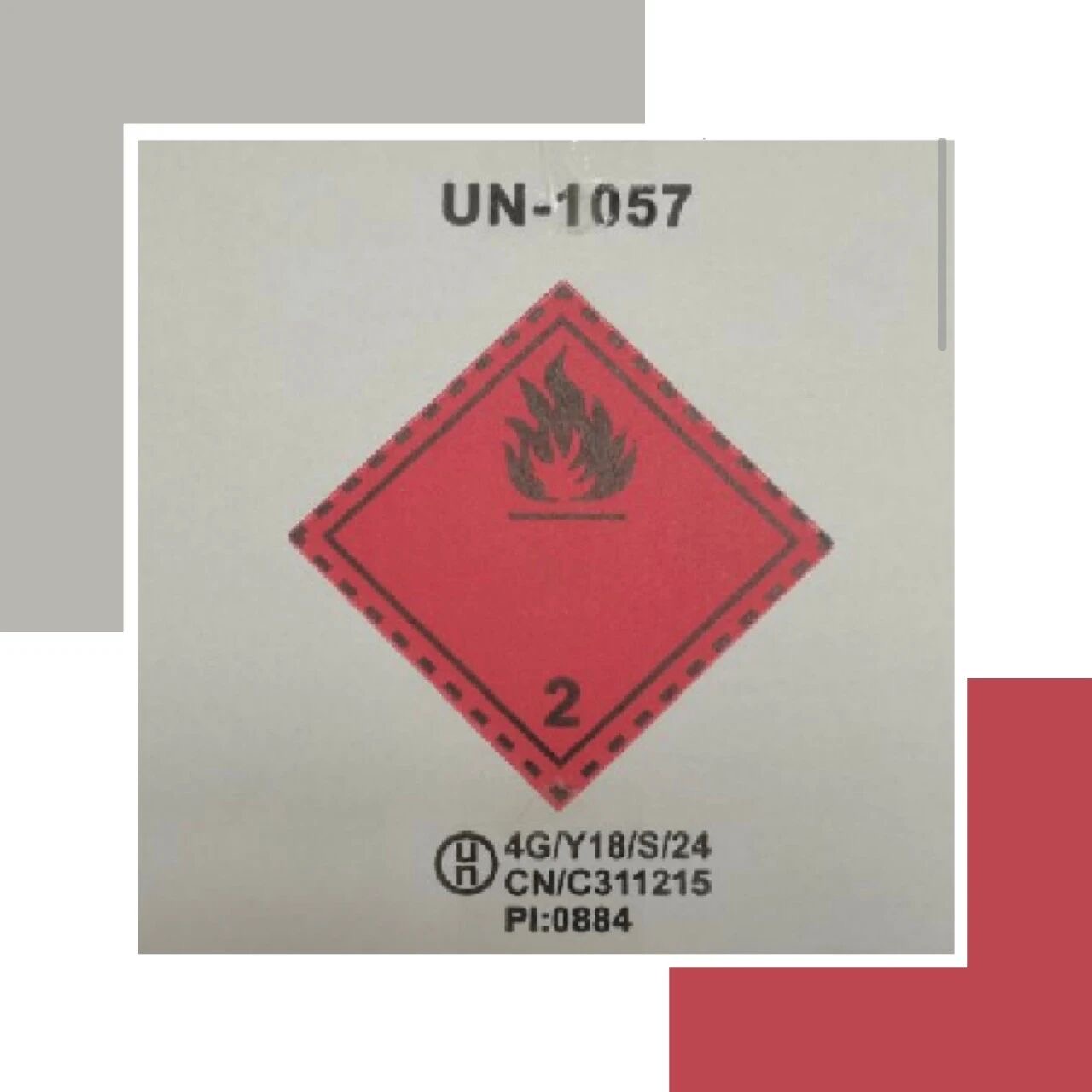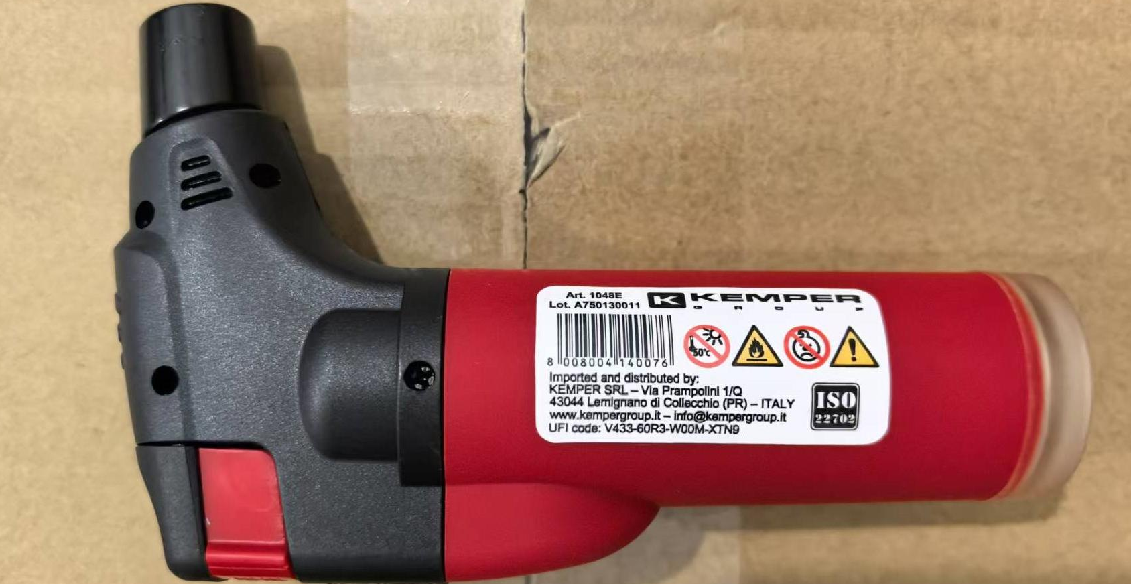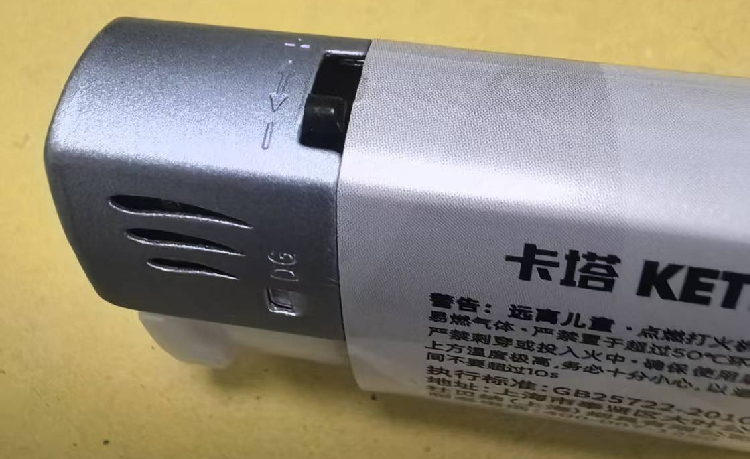
China is one of the world’s largest lighter producers, exporting billions of units annually. Lighters are explicitly listed as dangerous goods under international regulations, bearing UN code 1057 and classified as Class 2.1 Flammable Gas. They can be further categorized into disposable pocket gas lighters, refillable pocket gas lighters, other igniting devices (e.g., torch lighters). For exports, an application must be made to customs for dangerous goods packaging identification and commodity inspection.

I. Enterprise Qualification Requirements
Customs implements a registration management system for enterprises producing lighters for export. Manufacturing enterprises must obtain a customs registration code before they can engage in lighter export operations.
Application Documents
These include a business license and workplace safety permit. Upon successful review, a “Registration Certificate for Export Lighter and Torch Type Commodity Manufacturing Enterprises” and a dedicated code will be issued.
II. Required Documents for Export Declaration
1. Type test report for export lighters and torch lighters;
2. “Performance Inspection Result Sheet for Packaging Containers used for Outbound Dangerous Goods” for the packaging used;
3. Factory inspection certificate of conformity;
4. Foreign trade contract, invoice, and other related documents.
III. Packaging and Marking Requirements


1. Packaging:
Export lighters and torch lighters must use Class II or higher dangerous goods packaging. Acceptable packaging containers include wooden boxes and fiberboard boxes. The boxes must be intact and undamaged, with strapping securely fastened around them.
2. Marking:
The packaging must bear the required enterprise registration code and batch number, UN code (1057), UN mark, and the dangerous goods symbol (Class 2 flammable gas symbol, minimum dimensions 100 mm × 100 mm).

IV. Inspection
Customs inspection and supervision for exported lighters and torch lighter adopt a combined approach of type testing and routine inspection.
1. Type Testing:
A full type test must be conducted when lighters and torch lighters are exported for the first time, or when there are changes in their structure, raw materials, or production processes. Type testing includes 12 items such as child-resistant mechanism testing, flame height testing, and temperature testing. Samples for type testing are randomly drawn by customs officers from the enterprise’s finished product warehouse. Upon successful inspection by a customs lab, a “Lighter Type Test Report” is issued. The validity period for type testing is 12 months for metal-cased lighters and torch lighters, and 9 months for plastic-cased lighters and torch lighters.
2. Routine Inspection:
Routine item inspections for exported lighters are conducted batch by batch within the validity period of the approved full type test. These inspections include appearance inspection, safety device verification, drop testing, fill volume verification, and leakage testing.
3. Appearance Inspection:

(1) Lighters must be embossed with a customs-issued enterprise registration code, such as “39006,” ensuring the code is clear and accurate.

(2) Lighters should feature safety warning markings. These include a warning such as “Keep out of reach of children and away from high temperatures” or a warning of equivalent meaning. Safety symbols may also be used, including the “Warning” symbol, “keep out of reach of children” symbol, “Flammable” symbol, and “Do not expose to temperatures exceeding 50°C or to prolonged sunlight” symbol.

(3) The flame height adjustment device must be marked. Each lighter requires a permanent marking on its flame height adjustment mechanism, which must remain legible throughout its entire service life.
V. Non-compliant Cases
1. After customs sampled and submitted for testing a batch of torch lighters from an enterprise's first export, laboratory test results indicated that the samples failed the flame height test. According to the relevant requirements of the Rules for Inspection of Utility Lighters for Export Dangerous Goods (SN/T 0761.3-2011), the qualification standard for pre-mixed torch lighters is a maximum flame height not exceeding 75 mm. As the flame height of this batch of torch lighters exceeded 75mm, customs determined the batch to be non-compliant and required the enterprise to implement technical rectifications. The batch can only be declared for export again after passing a full type test.
Customs Reminder:
In recent years, many torch lighters have been used by foreign customers as tools for outdoor cooking and starting fires. Some customers have requested enterprises to increase the flame jet height during production. When manufacturing lighters and trough lighter products, enterprises must not only meet customer demands but also strictly implement the inspection requirements for such products in both domestic and destination markets to avoid export obstructions.
2. Customs inspection officers conducted an on-site examination of a company's batch of lighters prepared for export. Following a fill volume assessment, it was determined that the gas filling in these lighters exceeded 85% of capacity. In accordance with the relevant requirements of the Rules for Inspection of Utility Lighters for Export Dangerous Goods (SN/T 0761.3-2011), the batch was deemed non-compliant and thus ineligible for export. Upon inquiry with the company representative, it was learned that the overfilling was a response to intense market competition at the export destination, aimed at meeting customer demands.
Customs Reminder:
To ensure safety, the liquefied gas filled in lighters must not exceed 85% of gas container's capacity. Excessive filling leads to undue internal pressure, significantly increasing the risk of explosion and gas leakage. While accepting customer orders, enterprises should not blindly accommodate unreasonable demands but must also prioritize product quality and safety, strictly adhering to production standards for lighters.
Disclaimer:The above content is translated from Chinese version of China Inspection and Quarantine Times. The China Inspection and Quarantine Times version shall prevail.